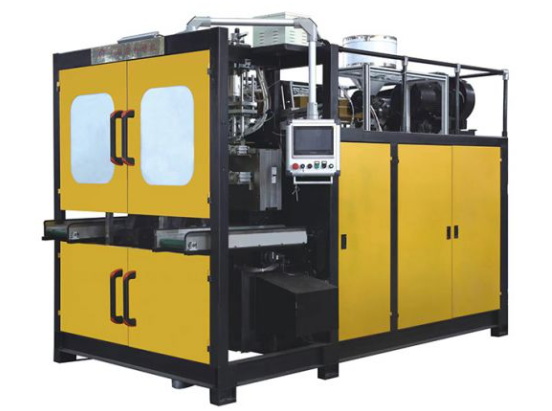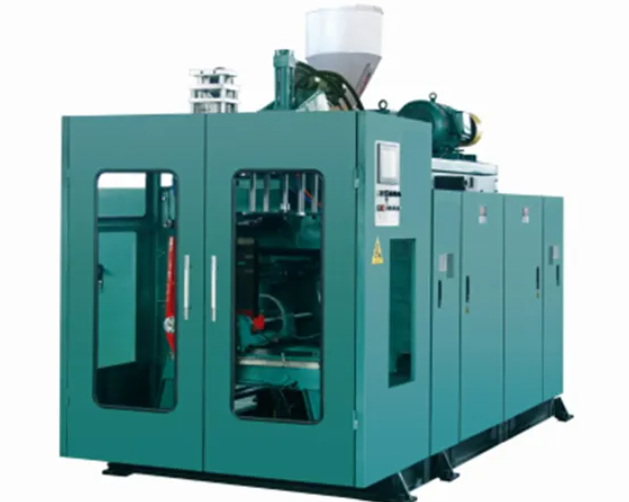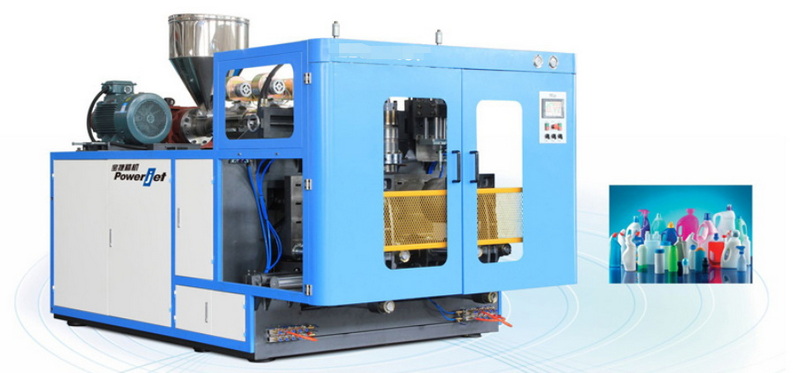Content Menu
● Introduction to Extrusion Blow Molding
>> Key Components of an Extrusion Blow Molding Machine
● Maintenance Plan for Fully Automatic Extrusion Blow Molding Machines
>> Daily Maintenance
>> Weekly Maintenance
>> Monthly Maintenance
>> Quarterly Maintenance
>> Annual Maintenance
● Optimization Strategies
>> Regular Lubrication
>> Calibration and Cleaning
>> Training and Education
>> Energy Efficiency
● Advanced Technologies in Extrusion Blow Molding
>> Automation Systems
>> Sensors and Monitoring
>> Data Analytics
● Challenges and Solutions
>> High Initial Costs
>> Complex Maintenance
>> Skilled Operators
● Conclusion
● FAQ
>> 1. What are the key components of an extrusion blow molding machine?
>> 2. How often should hydraulic filters be inspected and replaced?
>> 3. What is the importance of regular lubrication in extrusion blow molding machines?
>> 4. What training is recommended for operators of extrusion blow molding machines?
>> 5. How does a fully automatic extrusion blow molding machine improve production efficiency?
Maintaining and optimizing a fully automatic extrusion blow molding machine is crucial for ensuring efficient production, reducing downtime, and enhancing product quality. This article will delve into the key aspects of maintenance and optimization strategies for these machines, providing insights into daily, weekly, monthly, quarterly, and annual maintenance tasks, as well as tips for improving performance.

Introduction to Extrusion Blow Molding
Extrusion blow molding is a versatile manufacturing process used to create a wide range of hollow plastic containers, such as bottles, drums, and technical parts. The process involves heating plastic pellets in an extruder, forming a molten tube called a parison, which is then blown into a mold to take shape. The fully automatic extrusion blow molding machine automates this process, offering high efficiency and consistency.
Key Components of an Extrusion Blow Molding Machine
- Extruder: This is where plastic pellets are melted and extruded. The extruder screw ensures that the molten plastic reaches the ideal temperature and consistency.
The extruder is a critical component, as it must maintain precise temperature control to ensure consistent plastic flow.
- Extrusion Head: The molten plastic flows into the extrusion head, where it splits into mandrels to form a parison.
The design of the extrusion head is crucial for achieving uniform parison thickness, which affects the final product's quality.
- Blow Molding System: This includes the blowing mechanism and mold. Air is blown into the parison to expand it against the mold walls.
The blow molding system requires precise control over air pressure and temperature to ensure proper molding.
Maintenance Plan for Fully Automatic Extrusion Blow Molding Machines
A well-structured maintenance plan is essential for maintaining the efficiency and longevity of a fully automatic extrusion blow molding machine. Here's a breakdown of daily, weekly, monthly, quarterly, and annual tasks:
Daily Maintenance
1. Check Moving Parts: Ensure all moving parts are clean and free from debris. Wipe down straight-line navigation systems.
Regular cleaning prevents dust buildup, which can cause mechanical failures.
2. Check Fluid Levels: Verify that gas, power, water, and oil levels are normal.
Proper fluid levels are essential for maintaining optimal machine performance.
3. Air Compressor and Filter: Check for water in the air compressor and filter. Drain if necessary.
Moisture in the air system can lead to mold contamination and product defects.
4. Heating Elements: Ensure heating rings, plates, and temperatures are normal.
Consistent heat distribution is crucial for melting plastic evenly.
5. Bush and Pin Position: Check the position of the bush and pin to prevent locking issues.
Misaligned bush and pin can cause mechanical jams, leading to downtime.
Weekly Maintenance
1. Hydraulic Oil Level: Check and top off hydraulic oil in the tank.
Adequate hydraulic oil ensures smooth operation of hydraulic components.
2. Smooth Operation: Ensure all parts operate smoothly.
Smooth operation reduces wear and tear on moving parts.
3. Switches and Sensors: Clean limit switches, proximity switches, and touch blocks.
Clean sensors ensure accurate readings and prevent false triggers.
4. Gearbox Oil: Check the oil level in the gearbox.
Proper gearbox oil levels prevent overheating and mechanical failure.
5. Lubrication: Use an automatic lubrication pump for moving parts.
Regular lubrication reduces friction and extends component lifespan.
Monthly Maintenance
1. Hydraulic Filters: Inspect and replace hydraulic filters as needed.
Clean filters ensure hydraulic fluid remains free from contaminants.
2. Cooling System: Ensure the cooling system is functioning properly.
A well-functioning cooling system prevents overheating and maintains optimal machine performance.
3. Mold Inspection: Inspect the mold for wear and tear.
Regular mold inspection helps identify potential issues before they affect production.
Quarterly Maintenance
1. Comprehensive Inspection: Perform a thorough inspection of all machine components.
A comprehensive inspection helps identify hidden issues and prevents unexpected downtime.
2. Extruder and Screw: Clean and inspect the extruder and screw for wear.
Cleaning and inspecting the extruder and screw ensure consistent plastic flow and quality.
3. Electrical System: Inspect the electrical system and perform repairs as needed.
A well-maintained electrical system reduces the risk of electrical failures.
Annual Maintenance
1. Machine Overhaul: Perform a complete overhaul of the machine.
An annual overhaul ensures all components are in good condition and extends the machine's lifespan.
2. Component Replacement: Replace any worn or damaged components.
Replacing worn components prevents future failures and maintains production efficiency.
3. Lubrication and Cleaning: Lubricate and clean all moving parts.
Thorough lubrication and cleaning ensure smooth operation and reduce wear.

Optimization Strategies
Regular Lubrication
Regular lubrication of moving parts reduces friction and prevents premature wear. Follow the manufacturer's guidelines for lubricant type and frequency. Proper lubrication also helps maintain the machine's efficiency and reduces energy consumption.
Calibration and Cleaning
Keep the machine clean from dust and debris. Calibrate sensors and instruments regularly to ensure accurate measurements and consistent production quality. Calibration is particularly important for maintaining precise temperature control and air pressure, which are critical for producing high-quality products.
Training and Education
Invest in training programs for operators to understand the basics of extrusion blow molding, evaluate operating procedures, and solve common problems. Well-trained operators can identify potential issues early and optimize production processes.
Energy Efficiency
Optimize energy consumption by ensuring that all systems are running efficiently. This includes using energy-efficient motors and optimizing heating and cooling systems. Reducing energy waste not only saves costs but also contributes to a more sustainable production environment.
Advanced Technologies in Extrusion Blow Molding
Modern fully automatic extrusion blow molding machines often incorporate advanced technologies such as automation systems, sensors, and data analytics. These technologies enable real-time monitoring, predictive maintenance, and optimized production planning.
Automation Systems
Automation systems allow for precise control over the production process, ensuring consistency and reducing human error. Automated systems can also be programmed to adjust parameters based on real-time data, optimizing production efficiency.
Sensors and Monitoring
Advanced sensors monitor temperature, pressure, and other critical parameters in real-time. This data can be used to adjust the process dynamically, ensuring that products meet quality standards.
Data Analytics
Data analytics tools help analyze production data to identify trends and areas for improvement. By analyzing data on production efficiency, quality, and downtime, manufacturers can make informed decisions to optimize their processes.
Challenges and Solutions
Despite the benefits of fully automatic extrusion blow molding machines, manufacturers may face challenges such as high initial costs, complex maintenance, and the need for skilled operators. Addressing these challenges requires careful planning and investment in training and maintenance.
High Initial Costs
The high initial cost of purchasing a fully automatic extrusion blow molding machine can be a barrier for some manufacturers. However, the long-term benefits of increased efficiency and reduced labor costs can offset these expenses.
Complex Maintenance
The complexity of these machines requires specialized maintenance skills. Investing in training programs for maintenance personnel can help ensure that the machine operates at optimal levels.
Skilled Operators
Operators need to be well-trained to manage the machine effectively. Providing ongoing training and education helps operators optimize production processes and troubleshoot issues efficiently.
Conclusion
Maintaining and optimizing a fully automatic extrusion blow molding machine requires a comprehensive approach that includes regular maintenance tasks, optimization strategies, and ongoing education. By following these guidelines, manufacturers can ensure efficient production, reduce costs, and enhance product quality.

FAQ
1. What are the key components of an extrusion blow molding machine?
The key components include the extruder, extrusion head, and blow molding system. The extruder melts plastic pellets, the extrusion head forms the parison, and the blow molding system shapes the final product.
2. How often should hydraulic filters be inspected and replaced?
Hydraulic filters should be inspected and replaced monthly as needed to ensure the hydraulic system operates smoothly and efficiently.
3. What is the importance of regular lubrication in extrusion blow molding machines?
Regular lubrication reduces friction and prevents premature wear on moving parts, ensuring smooth operation and extending the machine's lifespan.
4. What training is recommended for operators of extrusion blow molding machines?
Operators should receive training on the basics of extrusion blow molding, operating procedures, and problem-solving techniques to optimize production efficiency and quality.
5. How does a fully automatic extrusion blow molding machine improve production efficiency?
A fully automatic machine automates the entire process, from extrusion to molding, reducing manual labor and increasing production speed and consistency.






















